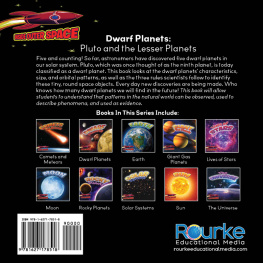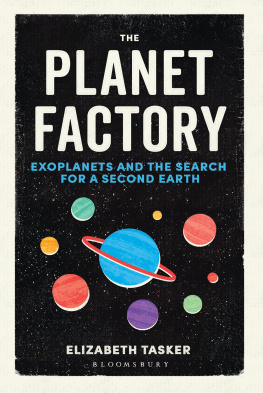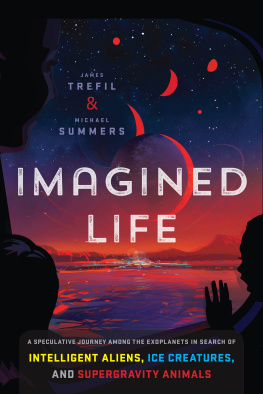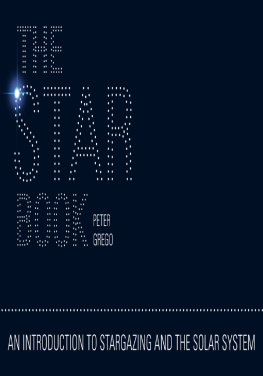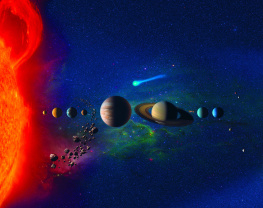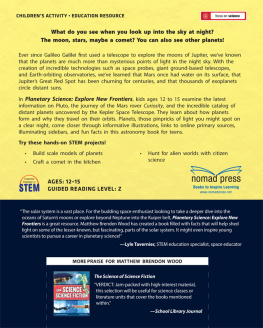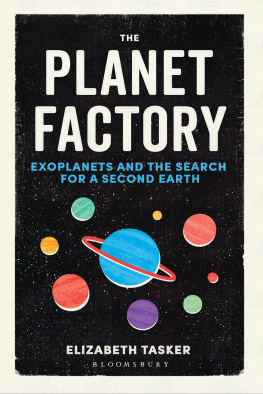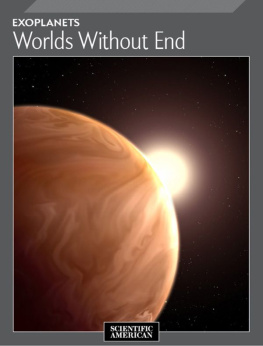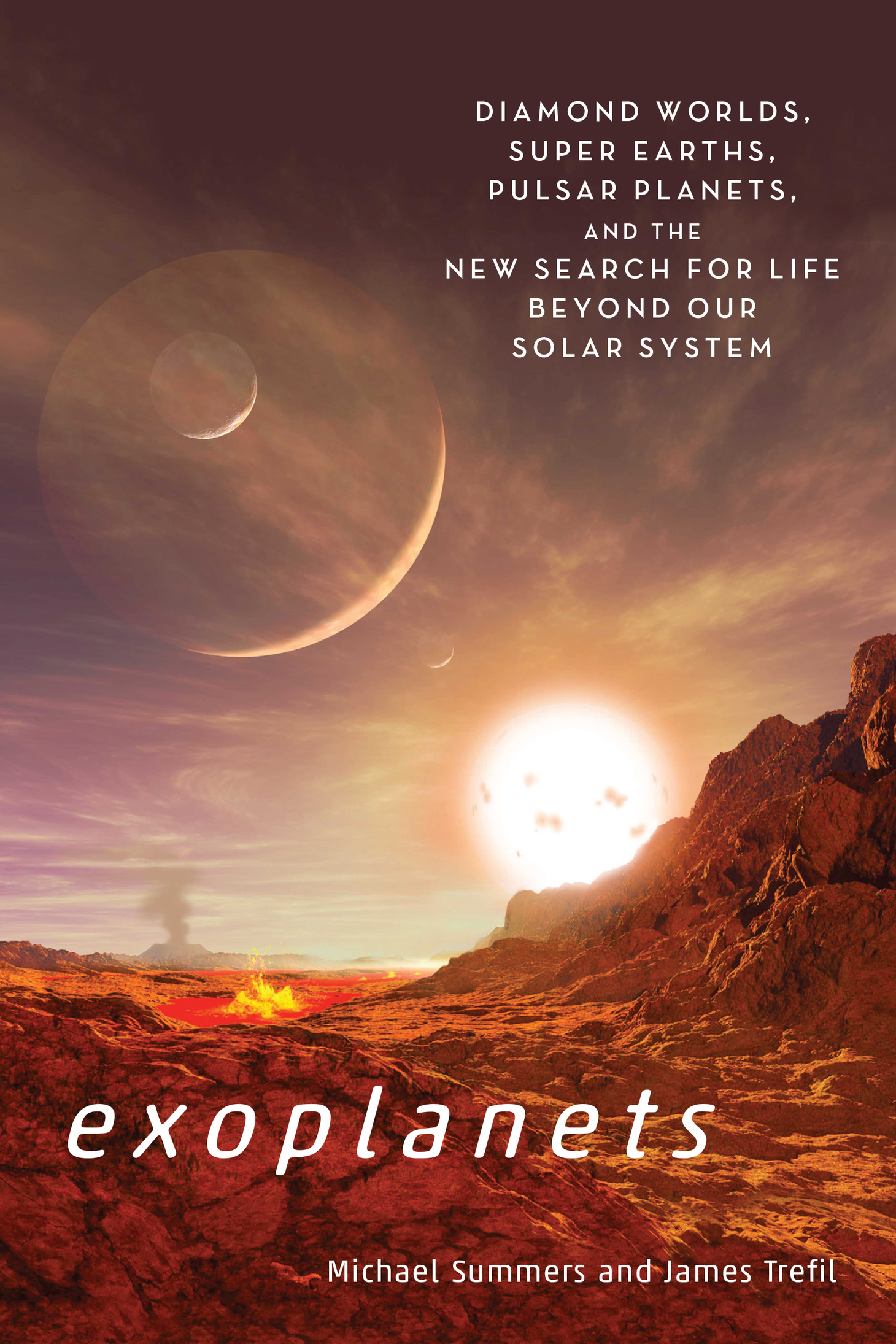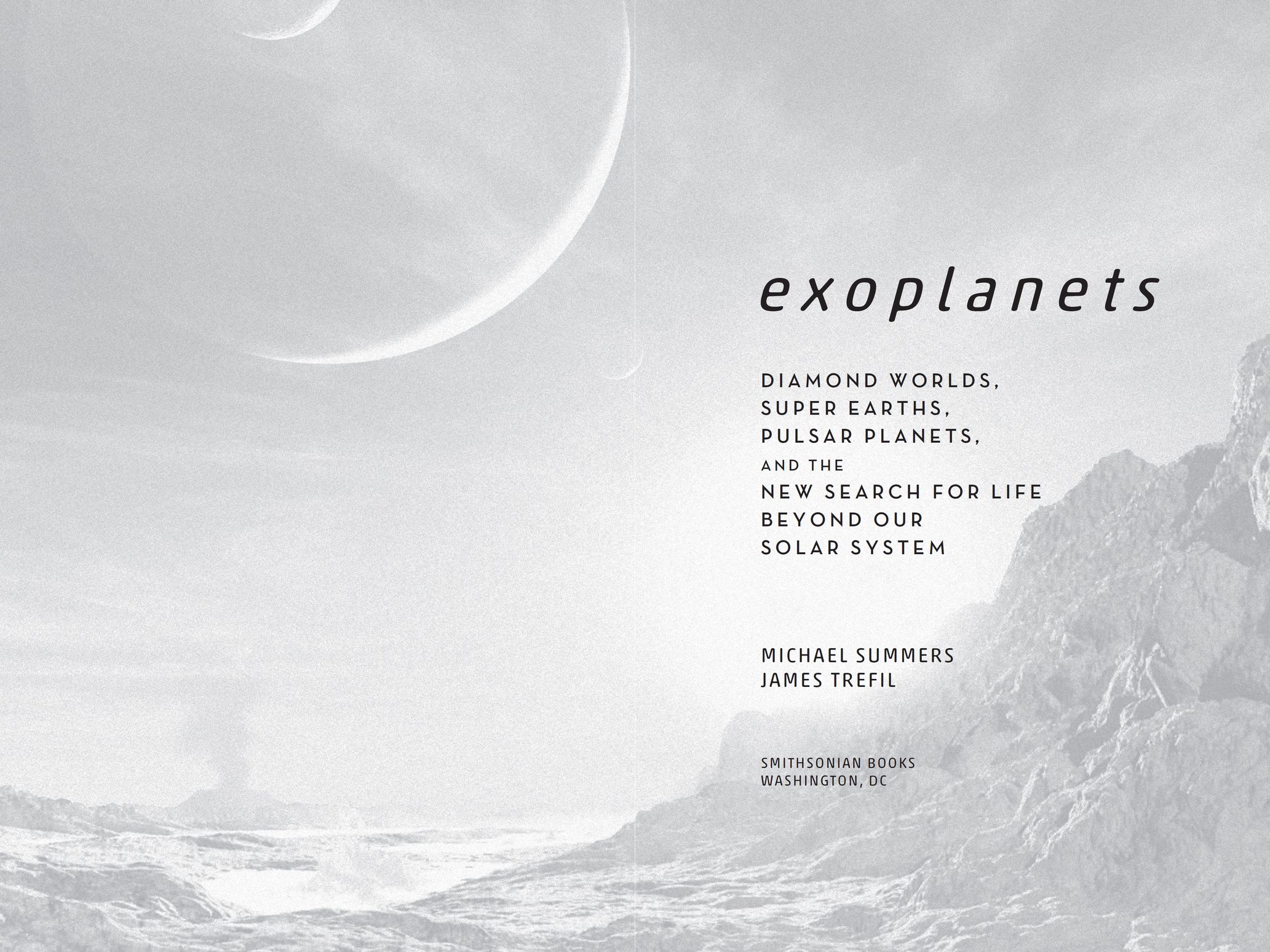Contents
2017 by Michael Summers and James Trefil
All rights reserved. No part of this publication may be reproduced or transmitted in any form or by any means, electronic or mechanical, including photocopying, recording, or information storage or retrieval system, without permission in writing from the publishers.
This book may be purchased for educational, business, or sales promotional use. For information, please write: Special Markets Department, Smithsonian Books, P.O. Box 37012, MRC 513, Washington, DC 20013
Published by Smithsonian Books
Director: Carolyn Gleason
Managing Editor: Christina Wiginton
Production Editor: Laura Harger
Edited by Emily Park
Designed by Jody Billert
Typeset by Scribe
Library of Congress Cataloging-in-Publication Data
Names: Summers, Michael E., author. | Trefil, James, 1938
Title: Exoplanets : diamond worlds, super Earths, pulsar planets, and the new search for life beyond our solar system / Michael Summers, James Trefil.
Description: Washington, DC : Smithsonian Books, [2017] | Includes index.
Identifiers: LCCN 2016018596 | ISBN 9781588345943
Subjects: LCSH: Extrasolar planets. | Planets. | Life on other planets. | Extraterrestrial beings.
Classification: LCC QB820 .S86 2017 | DDC 523.2/4dc23 LC record available at https://lccn.loc.gov/2016018596
Ebook ISBN9781588345950
For permission to reproduce illustrations appearing in this book, please correspond directly with the owners of the works, as seen on . Smithsonian Books does not retain reproduction rights for these images individually or maintain a file of addresses for sources.
v4.1
a
The authors dedicate this book to our fellow Americans who are living with multiple sclerosis and Parkinsons disease.
Dont give up!
contents


NOT YOUR GRANDFATHERS GALAXY
There are more things in heaven and earth, Horatio, than are dreamt of in your philosophy.
Shakespeare, Hamlet, Act 1, Scene 5
T he universe used to be a simple place. We lived in a sedate solar system with nine planets circling an ordinary star in an unremarkable part of the galaxy. We assumed there were other solar systems out theresystems pretty much like ours. We had genteel arguments about whether some of those systems might support life, and we enjoyed science fiction adventure stories such as Star Trek and Star Wars that populated the galaxy with interesting (and often combative) beings who spoke English. But the central fact was that we knew about only one planetary system, so we labored under what we can call the curse of the single example.
If you have only one example of somethingbe it a planetary system or a butterflythe natural assumption is that every other thing you find will be like the one you know about. Take butterflies as an example. If the only kind of butterfly you had ever seen was a monarch, it would be reasonable to assume that all butterflies have to be big and orange and migrate to a particular spot in California every year. Confronted with a cabbage butterflysmall, white, and nonmigratoryyou might understandably be confused. Some of your scientific colleagues might even argue that what you were seeing wasnt a butterfly at all, but a kind of beetle. Eventually, though, you would begin to explore a little more and find that the discovery of the cabbage butterfly was just the beginning of a journey into a world of amazing complexity and diversity, and that there were thousands of different kinds of butterflies in nature. You would realize that your original paradigmthe notion that there was only one kind of butterflywas simply wrong and that it had blinded you to the true complexity of the living world.
We argue in this book that the butterfly analogy is a perfect description of humanitys recent discovery of the universe of exoplanets: planets outside our solar system. Only 30 years ago, most scientists would have asserted that we had a perfectly good explanation of the origins of our own solar system, an explanation based on the solid bedrock of the laws of physics and chemistry. These laws, they would have said, dictate that any other solar systems out there would have an inner contingent of small, rocky planets and an outer set of gas giants. These other solar systems, in other words, would be just like ours. And like the hypothetical butterfly collector in our analogy, we would begin our exploration of the worlds beyond our solar system with the wrong paradigm in mind, and, again like that hypothetical collector, we would be overcome by the incredible complexity we found when we actually looked at what is out there.
Planetary surprises were not slow in coming. Before we even got out of our own backyard, the way we looked at our solar system underwent a revolution. We began to see that, instead of a handful of planets in sedate orbit around the Sun, the moons of the outer planets constitute a group of diverse worlds in their own right. One of them, Jupiters moon Europa, turned out to have a vast ocean of liquid water under its icy exterior, a fact that instantly made it a target for scientists interested in finding life away from Earth. Since that early discovery, such interior oceans have been found on other Jovian moons; on Enceladus, a moon of Saturn; and perhaps even under the frozen surface of Pluto. Instead of being a rarity found only on Earth, liquid water appears to exist in many other places even within our own solar system. The paradigm that told us that water has to be in surface oceans, as on Earth, was just wrong.
Things got more curious as we started exploring the outer reaches of our system. Well touch briefly on the silliness involved in the demotion of Pluto in , but the fact of the matter is that Pluto is actually the gateway to a whole new part of the solar system. Called the Kuiper belt after the Dutch astronomer Gerard Kuiper (190573), who suggested its existence in 1951, this is a flat disk of material that extends out beyond Pluto. We have known about the belt for a long time, but it was usually considered a kind of afterthought to the inner planets. Indeed, one of the authors of the book you are holding (James Trefil, hereafter JT) once compared it to a scrap pile left at a construction site after the important building was done.
This attitude changed quickly when astronomers discovered that, far from being an inconsequential pile of rubble, the Kuiper belt is actually home to an incredible variety of planets. Some of these planets are the size of Pluto, and some even have moons. Today, some astronomers estimate that dozens of planets may be lurking out there, a number that completely dwarfs the familiar inner group that includes Earth. Even before we left the solar system, in other words, the simple paradigm of nine planets orbiting the Sun was breaking down. Instead of being a lonely, demoted outsider, Pluto became the beginning of a previously unknown collection of worlds.



